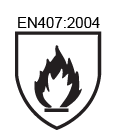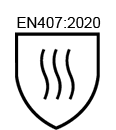Any enquiry please do not hesitate to contact / e-mail us.
Search
EN388 – MECHANICAL PROTECTION
This standard applies to all kinds of protection in respect of physical and mechanical aggressions caused by abrasion, blade cut, tearing and punture.
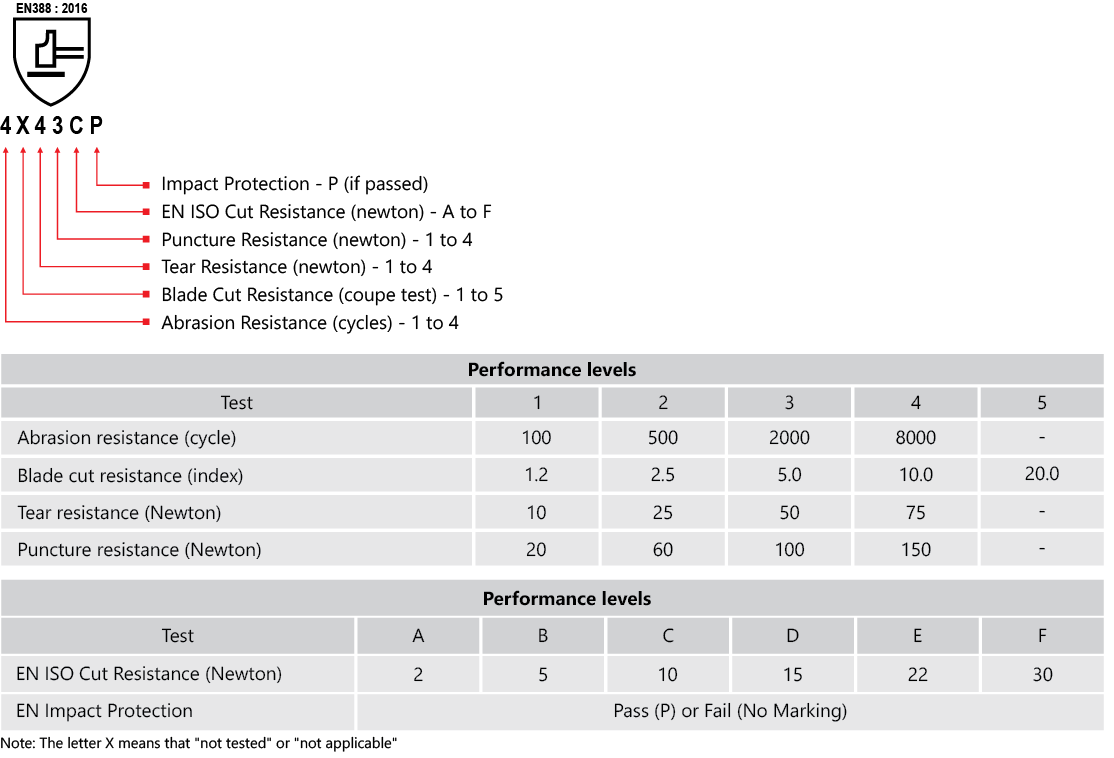
Note: The letter X means that "not tested" or "not applicable"
EN374 – CHEMICAL AND MICRO-ORGANISMS PROTECTION
This standard specifies the capability of gloves to protect the user from dangerous chemicals and/or micro-organisms.
PERMEATION
Permeation is the measure of the chemical substance penetration of the protective glove. A protective glove can be permeated within seconds. It is therefore necessary to measure breakthrough times for the chemical to come in contact with the skin. Each chemical tested is classified in terms of breakthrough time performance as below table:
CHEMICAL LIST
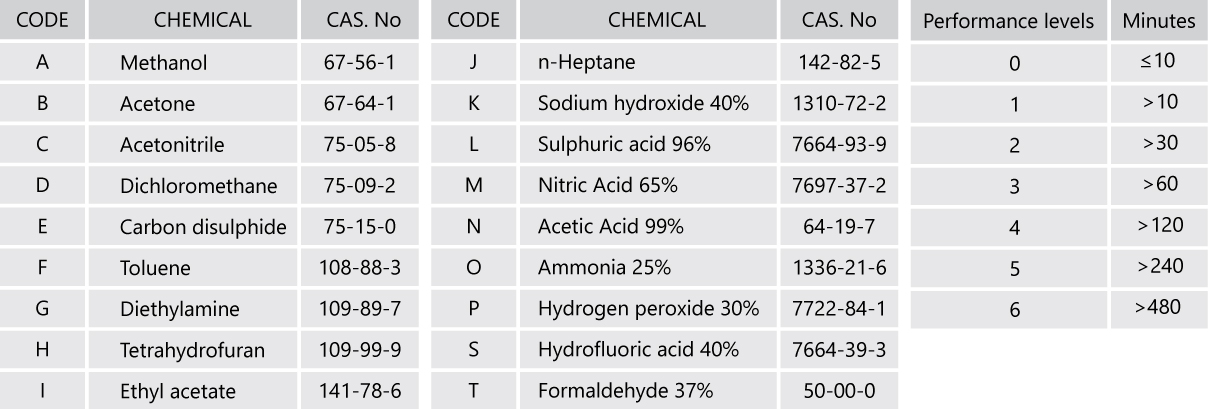
EN ISO 374-1:2016
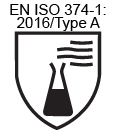
ABCDEF |
Minimum breakthrough times for a Type A glove is 30 mins (Level 2) against minimum 6 chemicals of the chemical list. |
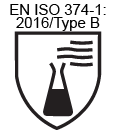
ABC |
Minimum breakthrough times for a Type B glove is 30 mins (Level 2) against minimum 3 chemicals of the chemical list. |
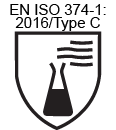 |
Minimum breakthrough times for a Type C glove is 10 mins (Level 1) against 1 chemical of the chemical list. |
EN ISO 374-5 - MICRO-ORGANISMS
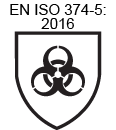 |
For gloves protective against bacteria and fungi, the biohazard pictogram is applied. For this glove must pass water and air leak test per the new EN ISO 374 Standard.
|
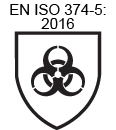
VIRUS |
For gloves protective against bacteria, fungi and virus, the biohazard pictogram is accompanied with the term "VIRUS", underneath. For this glove must be tested according to ISO16604:2004 (Method B). |
EN511 – COLD PROTECTION
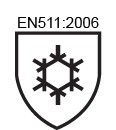
abc |
Fail: water penetrated after 30 min
|
EN407 – THERMAL PROTECTION (HEAT AND/OR FIRE)
|
Pictogram for Flame Resistant Gloves. abcdef
Pictogram for Non Flame Resistant Gloves.
X2XXXX |
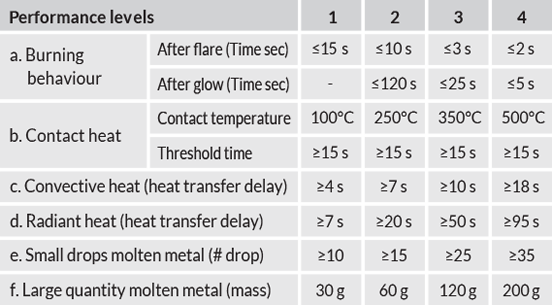 |
EN421 - PROTECTION FROM RADIOACTIVE CONTAMINATION
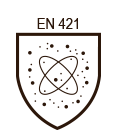 |
Radioactive contamination occurs when a radioactive substance is present on surfaces or objects unintentionally or undesirably. To ensure a glove offers protection from such contamination, it must successfully undergo the penetration test specified in RN374 and demonstrate liquid-proof properties. In containment enclosures, gloves need to additionally pass a dedicated air pressure test. Gloves that meet the requirements for shielding against radioactive contamination, often referred to as radiation gloves, are identified by the presence of a specific pictogram, indicating their successful completion of the required tests. |
|
|
|
EN 16350 - PROTECTIVE GLOVES - ELECTROSTATIC PROPERTIES
 |
This European Standard provides additional requirements for protective gloves that are worn in areas where flammable or explosive areas exist or might be present (see IEC 60079-32-1). It specifies a test method and requirements for performance, marking and information for electrostatic dissipative protective gloves to minimize explosion risks. |
|
|
|
ANSI CUT STANDARD

ANSI Cut standard is a cut resistance standard from the American National Standards Institute (ANSI) and International Safety Equipment Association (ISEA). This cut standard has established ASTM F2992-15 as the test method for measuring cut resistance/protection on a 9-level scale.
| CUT LEVEL RATING | RESISTANCE (GRAMS) | PROTECTION LEVEL |
| A1 |
200 - 499 |
Very Low |
| A2 |
500 - 999 |
Low |
| A3 |
1,000 - 1,499 |
Moderate |
| A4 |
1,500 - 2,199 |
Moderate to High |
| A5 |
2,200 - 2,999 |
High |
| A6 |
3,000 - 3,999 |
High to Very High |
| A7 |
4,000 - 4,999 |
Very High |
| A8 |
5,000 - 5,999 |
Very High to Extreme |
| A9 | 6,000+ |
Extreme |
EC FOOD DIRECTIVE
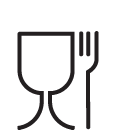 |
This pictogram indicates that the materials used should not yield to food components in a quantity likely to present a danger to human health or to involve an unacceptable modification of the composition of the food products and there should not be deterioration of their organoleptic characters according to EU commission regulation 10/2011 on materials and articles in contact with food. The gloves approved for food contact must comprise the following pictogram. Further information and testing specification available upon request. |

REACH
REACH is the European Community Regulation on chemicals and their safe use (EC 1907/2006). It deals with the Registration, Evaluation, Authorisation and Restriction of Chemical substances. The law entered into force on 1 June 2007.
Within the field of application, only chemical substances are allowed to be put in circulation, which were registered before. Each manufacturer or importer intending to put his substances in the EU in circulation, must have an own registration number for these substances.
The aim of REACH is to improve the protection of human health and the environment through the better and earlier identification of the intrinsic properties of chemical substances. At the same time, REACH aims to enhance innovation and competitiveness of the EU chemicals industry.








